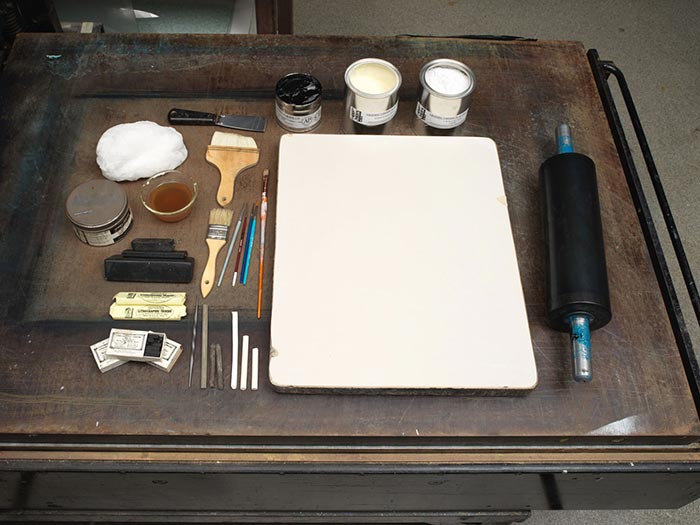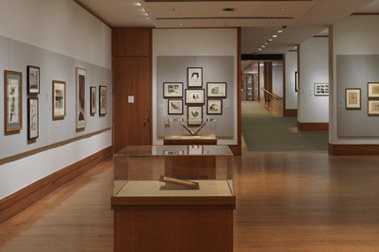A Howling Swell -- On the War Path: "Aw! I say Billay! Pour Us a Snifter, and Bring On Your Injuns!"
Publisher Currier & Ives American
Not on view
Several late nineteenth-century prints by Currier & Ives depict racist stereotypes of Native Americans that are offensive and disturbing; the images were often accompanied by demeaning captions. The Metropolitan Museum of Art preserves such works to shed light on their historical context and to enable the study and evaluation of racism.
In this caricature of the American West, three Native American men (each wearing feathers in his hair) peer over the top of a large boulder at two white men seated on smaller rocks. As they face each other. "Buffalo Bill" Cody (left) --who is dressed in a buckskin jacket, blue pants, black boots and a wide-brimmed hat-- pours whiskey from a straw-covered jug into the glass held by his companion (right). This man (the "Howling Swell" of the title) has a very long white mustache hanging down to his waist, and a monocle over his right eye; he wears a safari helmet and a belted blue-checked shirt-jacket. Both Buffalo Bill ("Billay" in the caption) and the Howling Swell, who are unaware that they are being watched by the three Indians, fail to notice hands reaching around the boulder to steal their rifles. The title/caption is imprinted in the bottom margin of the sheet.
William Frederick Cody (1846–1917) was nicknamed "Buffalo Bill" in the 1860s, after he was hired to hunt bison to supply meat to railroad construction workers in Kansas. He later served as a civilian scout for the United States Army in the Western North American Native American territories -- a role that involved battle or other interactions with Native Americans that is now controversial. From time to time, he also led hunting expeditions in the West for European aristocrats -- which is being parodied in this print. In 1883, Buffalo Bill founded Buffalo Bill's Wild West as a touring specatacle entertainment, involving hundreds of participants, including horseback riders (cowboys and indiginous Indians), performers with sharp shooters and roping skills, and many other acts, in addition to those featuring wild buffalo, elk, cattle and other animals. In 1887, Buffalo Bill's Wild West was invited to perform in England, where Queen Victoria attended along with vast audiences. A few years later, Buffalo Bill and his Wild West company toured extensively throughout Europe to huge crowds, bringing Cody international fame.
Nathaniel Currier, whose successful New York-based lithography firm began in 1835, produced thousands of prints in various sizes that together create a vivid panorama of mid-to-late nineteenth century American life and its history. People eagerly acquired such lithographs featuring picturesque scenery, rural and city views, ships, railroads, portraits, hunting and fishing scenes, domestic life and numerous other subjects, including political cartoons, as an inexpensive way to decorate their homes or business establishments. As the firm expanded, Nathaniel included his younger brother Charles in the business. In 1857, James Merritt Ives (the firm's accountant since 1852 and Charles's brother-in-law) was made a business partner; subsequently renamed Currier & Ives, the firm continued until 1907.

